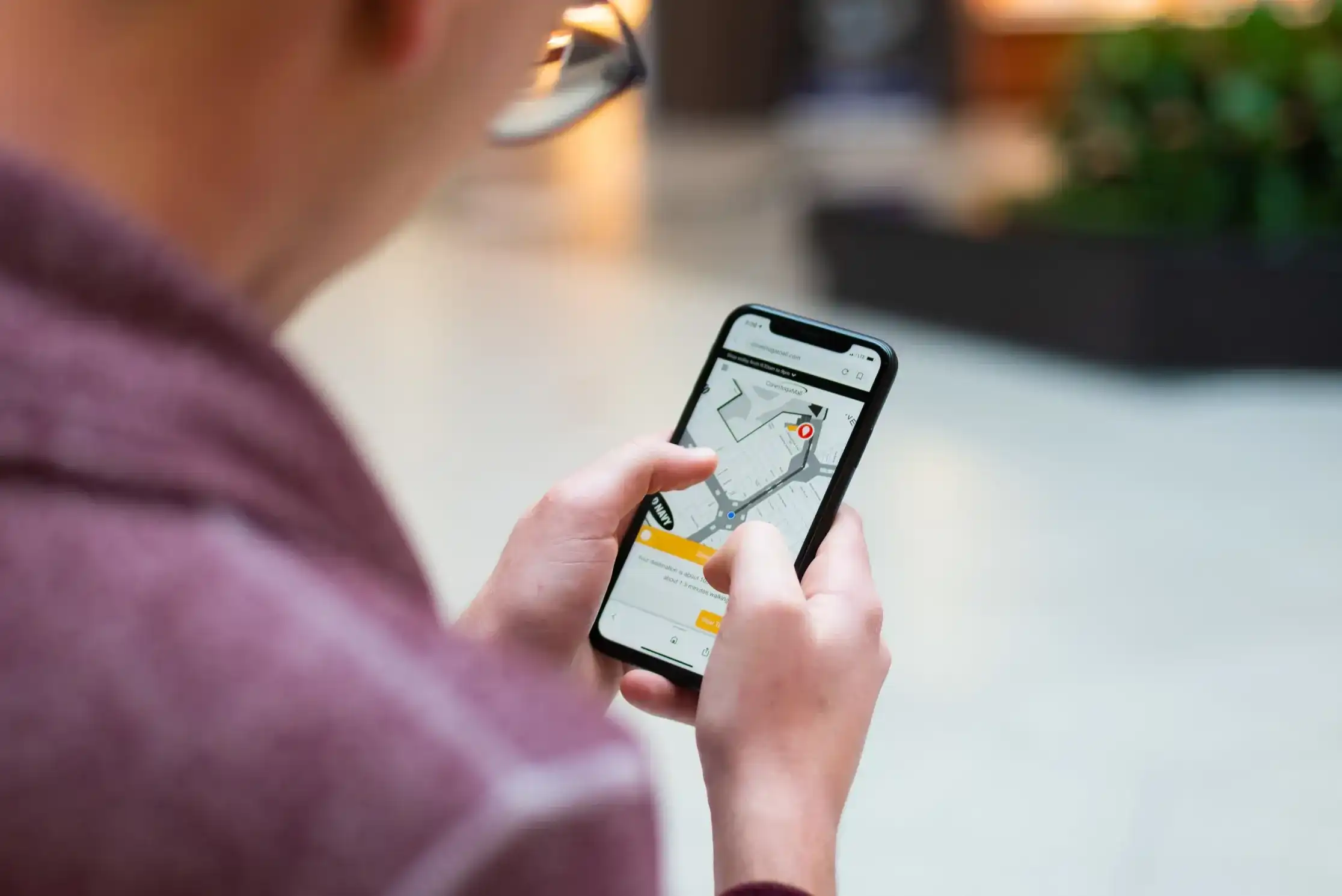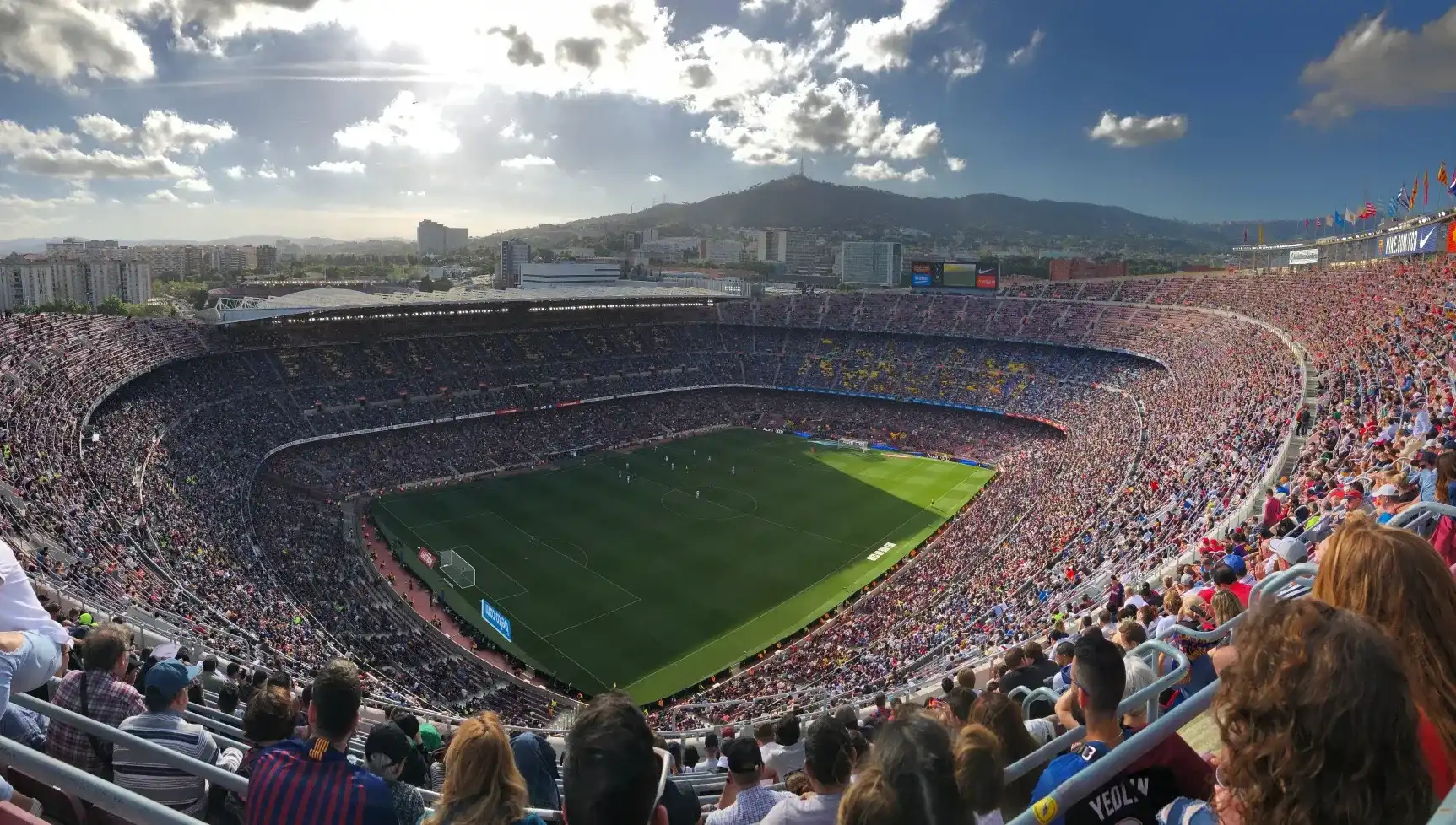Whether you're in a bustling mall, a busy office building, a vibrant stadium, or a sprawling airport, indoor wayfinding provides you with the tools and guidance to effortlessly find your way. Keep reading to find out how this technology works!
What is indoor wayfinding?
Indoor wayfinding is the process of navigating and finding one's way within complex indoor environments such as malls, offices, stadiums, and airports. It involves the use of user-friendly tools and technologies to provide accurate and efficient navigation assistance.
How does indoor wayfinding work?
To create an indoor wayfinding experience, an accurate digital map is needed. Combined with indoor positioning technology, for example, it allows for tracking movement within buildings, facilitates positioning in enclosed areas, and assists in directing towards a certain location. Some of the these technologies include radio frequency identification (RFID), Bluetooth Low Energy (BLE) beacons, indoor positioning systems (IPS), WiFi-based navigation, infrared technology, ultrasonic systems, computer vision, and more.
Wayfinding and the digital workplace
In the digital workplace, indoor wayfinding plays a crucial role in enhancing productivity, efficiency, and employee experience. By providing employees with reliable navigation tools and real-time information, companies can optimize workflows, reduce time spent searching for locations, and streamline collaboration and communication.
Technologies used in indoor wayfinding
Radio frequency identification (RFID) in indoor wayfinding
RFID technology uses electromagnetic fields to identify and track tags attached to objects or individuals. In indoor wayfinding, RFID can be used to provide location-based information, track assets, enable personalized experiences, and enhance security.
The role of Bluetooth low energy (BLE) beacons
BLE beacons are small, battery-powered devices that emit signals to communicate with nearby devices such as smartphones. By deploying these beacons strategically, indoor wayfinding solutions can accurately determine a user's location, deliver contextual information, and offer turn-by-turn directions.
Indoor positioning systems (IPS) and their usage
Indoor positioning systems use a combination of technologies, including Wi-Fi, BLE, and sensor fusion, to determine the position of a user within an indoor space. IPS can provide precise location data, enable navigation, facilitate asset tracking, and enhance personalization in indoor wayfinding applications.
Also, this technology helps traverse complicated layouts, is useful for charting a course through a building, supports maneuvering in crowded indoor spaces, and is used to pinpoint exact locations within a structure
WiFi-based indoor navigation
WiFi-based indoor navigation relies on existing WiFi infrastructure to determine a user's location. By leveraging signals from nearby access points, this technology enables accurate positioning, seamless navigation, and location-based services.
Understanding infrared technology in wayfinding
Infrared technology uses infrared light for detecting and locating objects or individuals within an indoor environment. By deploying infrared sensors strategically, indoor wayfinding systems can offer precise location information and assist users in finding their way.
Ultrasonic systems for indoor wayfinding
Ultrasonic systems use high-frequency sound waves to measure distances and detect objects. In indoor wayfinding, ultrasonic technology can enable accurate positioning, obstacle detection, and navigation assistance.
Indoor wayfinding using computer vision
Computer vision technology uses cameras and image processing algorithms to analyze visual data and extract meaningful information. In indoor wayfinding, computer vision can be used for object recognition, mapping, and providing visual navigation cues.
Augmented reality (AR) in indoor navigation
AR overlays digital information onto the real world, enhancing users' perception of their environment. AR-based indoor wayfinding applications can provide users with real-time directions, points of interest, and contextual information, improving their navigation experience.
Application of machine learning and AI in indoor wayfinding
Machine learning and AI algorithms can be used to improve indoor wayfinding and streamline the indoor mapping creation process. Stay tuned as we will be discussing this in further detail in the upcoming weeks.
Hybrid indoor wayfinding solutions
Hybrid indoor wayfinding solutions combine multiple technologies to provide robust and adaptable navigation experiences. By leveraging the strengths of different technologies, these solutions offer reliable and accurate indoor navigation across various environments.
Mobile apps for indoor navigation
Mobile apps are a common way for users to access indoor wayfinding services. These apps are available on both iOS and Android platforms, providing users with a convenient and familiar interface for navigating indoor spaces. They can offer features such as venue information, geofencing, real-time updates, and turn-by-turn directions to help visitors find their way in complex environments.
Interactive maps and signage
Interactive maps and signage play a crucial role in enhancing the visitor experience in indoor environments. These maps, often accessible through mobile apps or as on-site digital directories, provide a visual representation of the venue and help guests locate various points of interest. Clear and well-placed signage guide visitors throughout the venue, highlighting important areas or facilities such as escalators, stairs, elevators, bathrooms, exits, entrances, departments, stores, and customer service desks.
Advanced routing and path optimization
Indoor wayfinding platforms use advanced algorithms to calculate the most efficient routes for visitors. By routing, pinpointing, charting, traversing, maneuvering, plotting, and orienting visitors, these platforms help them reach their destinations quickly and efficiently. They take into account factors such as distance, accessibility, crowd levels, and user preferences.
Common features of wayfinding apps and technologies
Accurate, up-to-date information
Effective indoor wayfinding apps and technologies provide users with accurate and up-to-date information about indoor spaces, including real-time navigation instructions, points of interest, and other updates.
Time and money saving
By streamlining the navigation process, indoor wayfinding solutions save users valuable time and help them navigate efficiently. This can lead to increased discoverability, productivity, cost savings, and improved overall user experience.
Safer than existing solutions
Indoor wayfinding technologies enhance safety by reducing confusion and minimizing the risk of getting lost within large indoor environments. Users can confidently navigate spaces, reducing anxiety and promoting a sense of security.
Reliable communication
Wayfinding apps and technologies enable seamless communication between users and their surroundings. They provide clear instructions and step-by-step directions, notifications, and alerts, ensuring users are well-informed during their indoor journeys.
Challenges faced in implementing indoor wayfinding solutions
Complex buildings and shopping malls
Implementing indoor wayfinding solutions in complex buildings and shopping malls can be challenging due to the intricate layouts, multiple floors, and ever-changing tenant configurations. However, with advanced mapping technologies and ongoing updates, these challenges can be resolved.
Building managers and maintenance staffs
Collaboration with building managers and maintenance staff is crucial for successful implementation of indoor wayfinding solutions. They play a vital role in providing accurate floor plans, maintaining infrastructure, and ensuring the system's smooth operation.
Types of indoor wayfinding solutions available
Indoor positioning systems
Indoor Positioning Systems leverage a combination of technologies to determine the location of users within indoor spaces. This can be achieved through Wi-Fi, BLE beacons, sensor fusion, or other methods, providing accurate positioning data for seamless indoor navigation.
Indoor navigation maps
Indoor wayfinding solutions include detailed indoor maps that users can access through apps or web-based interfaces. These maps highlight key points of interest, routes, and provide interactive features for easy navigation.
Location sensing
Location sensing technologies, such as RFID or BLE, enable precise tracking and identification of assets or individuals within indoor environments. This functionality enhances security, enables targeted notifications, and assists in efficient resource management.
What are the benefits of a reliable indoor wayfinding solution?
Build an indoor system of record
A reliable indoor wayfinding solution acts as a comprehensive system of record, providing accurate and up-to-date information about the indoor environment. This data can be a source of truth and used for space management, resource optimization, and analytics purposes. It also assists in orienting individuals in new indoor environments and assists in plotting a route through an establishment.
Create digital, easy-to-navigate indoor maps
By creating digital indoor maps, wayfinding solutions make it simple for users to understand and navigate complex indoor venues. These maps can include interactive features, search functionality, and personalized recommendations to enhance the user experience.
Put indoor maps into everyone’s hands
Indoor wayfinding solutions empower users by putting indoor maps and navigation tools directly into their hands through mobile and web applications. This accessibility ensures that individuals can easily navigate and explore indoor environments with confidence.
Inform operations and decision-making
A reliable indoor wayfinding solution provides valuable data and insights that can inform operations and decision-making processes. It enables businesses to analyze user behavior, optimize space utilization, and identify areas for improvement.
Key Takeaways
- Indoor wayfinding is the process of navigating complex indoor environments using user-friendly tools and technologies.
- Various technologies such as RFID, BLE beacons, IPS, WiFi-based navigation, infrared technology, ultrasonic systems, computer vision, AR, machine learning, and AI are employed in indoor wayfinding solutions.
- Indoor wayfinding enhances productivity, efficiency, and user experience in the digital workplace.
- Wayfinding apps and technologies offer accurate, up-to-date information, save time and money, improve safety, and enable reliable communication.
Indoor wayfinding FAQs
How can indoor wayfinding improve customer experiences?
Indoor wayfinding enhances customer experiences by providing clear directions, guiding users to desired destinations, and offering information about nearby points of interest. This technology encourages exploring unfamiliar indoor settings. It reduces confusion and creates a seamless navigation experience, leading to higher customer satisfaction.
How is indoor wayfinding aiding facility management?
Indoor wayfinding assists facility management by streamlining operations, optimizing space utilization, and improving resource allocation. It enables effective space planning, asset tracking, and maintenance management, leading to improved efficiency and cost savings.
What are the potential privacy concerns with indoor wayfinding?
Privacy concerns related to indoor wayfinding primarily revolve around data collection and usage. It is important for organizations to prioritize user privacy, ensure transparent data practices, and comply with relevant regulations.
Tagged In
Share


